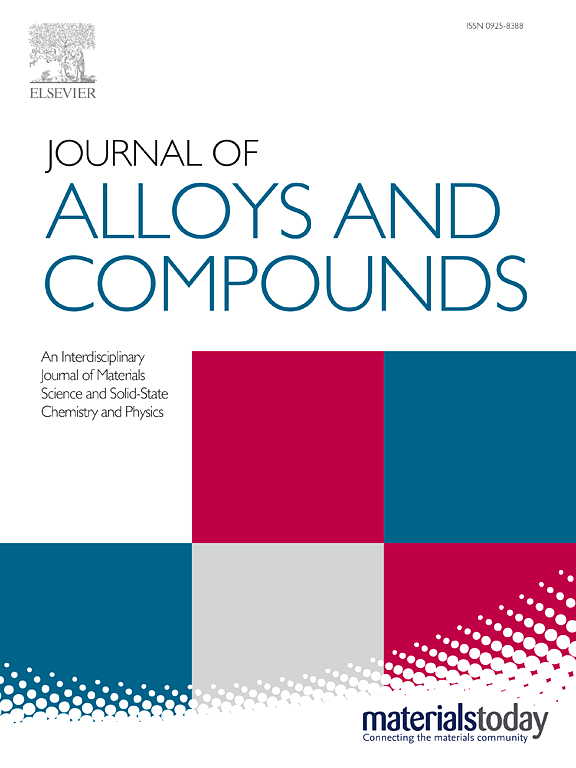Study on performance of laser cladding of 60 wt.%WC-Ni coating with ultrasonic/temperature composite energy field
IF 5.8
2区 材料科学
Q2 CHEMISTRY, PHYSICAL
引用次数: 0
Abstract
In order to suppress the crack and porosity sensitivity of the traditional laser cladding Ni-based WC coating, 60 wt.% WC-Ni coating was prepared on the 45 steel substrate by traditional, single temperature field assisted, and "ultrasonic vibration + temperature field" (UVAT) composite energy field assisted laser cladding. Scanning electron microscopy (SEM) and Electron Backscattered Diffraction (EBSD) were used to analyze the microstructure of the coating, and X-ray diffractometer (XRD) was used to analyze the phase of the coating. The mechanical properties, tribological properties, and electrochemical corrosion properties of the coating under different working conditions were compared and studied. The results show that there are a few cracks and pores in the coatings prepared by traditional and single-temperature field-assisted laser cladding, and WC particles are locally enriched. The vibration, agitation, and cavitation of UVAT can change the distribution state of WC particles and the binding state with the matrix phase so that the grain of the coating is fine, with no cracks, uniform and dense. The average microhardness of UVAT compound field-assisted laser cladding coating is 894.9 HV0.3, which is 1.23 and 1.14 times that of the first two processes, respectively. The wear rate is 51.62% and 12.68% of the first two, respectively, showing the best wear resistance. The wear mechanism of the three coatings is mainly abrasive wear, and the adhesive wear and oxidation wear are auxiliary. In 3.5 wt.% NaCl solution, the corrosion mechanism of the three coatings is intergranular corrosion, but the grain refining of the UVAT composite energy field coating leads to the increase of grain boundary density on the surface of the coating, the increase of corrosion channels, the reduction of corrosion tendency, and the enhancement of corrosion resistance. A new technical scheme is provided for the Ni-based WC coatings with no crack and high density.超声/温度复合能量场激光熔覆60wt %WC-Ni涂层的性能研究
为了抑制传统激光熔覆ni基WC涂层的裂纹和孔隙敏感性,采用传统、单温度场辅助和“超声振动+温度场”(UVAT)复合能量场辅助激光熔覆在45钢基体上制备了60 wt.% WC- ni涂层。采用扫描电镜(SEM)和电子背散射衍射(EBSD)对涂层的微观结构进行了分析,并用x射线衍射仪(XRD)对涂层的物相进行了分析。对比研究了涂层在不同工况下的力学性能、摩擦学性能和电化学腐蚀性能。结果表明:传统激光熔覆和单温度场辅助激光熔覆制备的涂层中存在少量裂纹和孔隙,WC颗粒局部富集;UVAT的振动、搅拌和空化可以改变WC颗粒的分布状态和与基体相的结合状态,使涂层的晶粒细小,无裂纹,均匀致密。UVAT复合场辅助激光熔覆层的平均显微硬度为894.9 HV0.3,分别是前两种工艺的1.23倍和1.14倍。磨损率分别为前两者的51.62%和12.68%,表现出最佳的耐磨性。三种涂层的磨损机理以磨粒磨损为主,粘结磨损和氧化磨损为辅。在3.5 wt.% NaCl溶液中,3种涂层的腐蚀机制均为晶间腐蚀,而UVAT复合能场涂层的晶粒细化导致涂层表面晶界密度增大,腐蚀通道增多,腐蚀倾向降低,耐蚀性增强。为制备无裂纹高密度镍基WC涂层提供了一种新的工艺方案。
本文章由计算机程序翻译,如有差异,请以英文原文为准。
求助全文
约1分钟内获得全文
求助全文
来源期刊

Journal of Alloys and Compounds
工程技术-材料科学:综合
CiteScore
11.10
自引率
14.50%
发文量
5146
审稿时长
67 days
期刊介绍:
The Journal of Alloys and Compounds is intended to serve as an international medium for the publication of work on solid materials comprising compounds as well as alloys. Its great strength lies in the diversity of discipline which it encompasses, drawing together results from materials science, solid-state chemistry and physics.
 求助内容:
求助内容: 应助结果提醒方式:
应助结果提醒方式:


